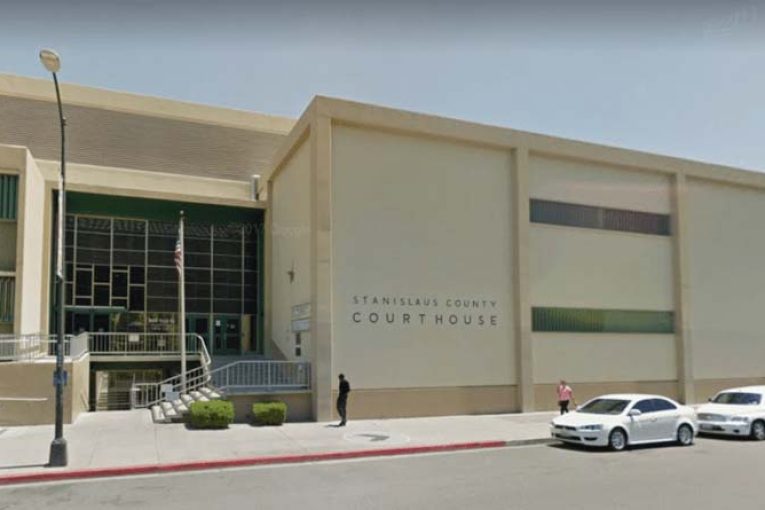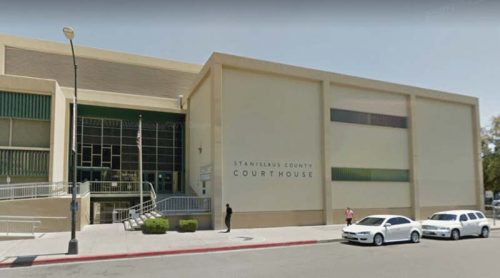

By Audrey Sawyer and Sarah Chayet
MODESTO, CA – During a law & motion hearing at Stanislaus County Superior Court this week, Deputy Public Defender Michael Weimer was denied a request for an “Evans Motion,” where the defense can arrange its own lineup.
DPD Weimer argued there was insufficient evidence used in identifying the accused, and why he wanted the accused’s own arranged lineup—noting a concern over the vagueness of description coming from the witness.
The witness referenced the accused to be a “Black man” and with descriptions of the vehicle which were not entirely accurate.
The accused waived his presence in court for this hearing and is currently free on bail bond facing charges of alleged felony robbery.
In Evans v. Superior Court, California’s Supreme Court ruled that where risk of misidentification is likely, a proper lineup should be provided. An Evans Motion would have required the sole eyewitness of the accused’s alleged crimes to view a lineup for the purpose of identifying the defendant. In this case, a photo lineup would take place because the accused is out of custody.
DPD Weimer argued to the court that the officers had never actually seen the accused driving. The only eyewitness in the case was a fast food manager.
When the officers arrived, DPD Weimer explained the accused was in a different car than what was referenced by the witness, and that officers could not locate any keys nearby.
Weimer added, “Only description that she gave was that the accused was a Black man and was driving a black Honda. We know she (witness) has misidentified the type of vehicle. She gave no specifics on how tall he was or his age. Going forward, there is a great risk of misidentification if she were to come in (testify).”
The defense insisted there is a “reasonable likelihood of mistaken ID.” Therefore, DPD Weimer requested for a photo lineup, stating that the witness would likely not be able to identify the accused.
Deputy District Attorney Travis Colby argued the eyewitness identification was not material, because police arrived to find a vehicle–similar to the one described by the witness–with the accused in the driver’s seat “slumped over” the wheel.
DDA Colby added the accused was noted to be intoxicated, stating, “No reasonable possibility it was anyone else, it is eyewitness identification whether or not the employee can make the identification. It is not material to the fact that police came to see him slumped over the wheel.”
DPD Weimer emphasized there were no keys found in the vehicle, so there was some uncertainty as to whether or not the accused had been driving, and continued to emphasize the “vague description of a Black male is not enough, no one except the witness saw him driving.”
Judge Shawn Bessey concurred with the DDA, ruling there was not a possibility of misidentification, stating, “It is circumstantial as to who was in the seat in the drive-thru. The model was correct, just because she misidentified the vehicle as a certain maker does not change the fact that she gave the license plate number, a description of where the car drove, and where the car parked. That information to dispatch resulted in finding someone slumped over.”
Judge Bessey added he did not believe this case to qualify as an Evans situation, denying the motion.
“I see it a different way,” said Judge Bessey. “It’s not that there is a possibility of misidentification. There was no identification in this case, right? So it’s circumstantial as it’s related to who was the driver in the drive-thru.”
“Just because she misidentified the vehicle as a certain make, doesn’t change the fact that she gave a specific license plate number and a description of where that car drove, where that car parked.” said Judge Bessey.
Judge Bessey added, “There was no identification of the person…just a simple observation that this person was driving and was not coherent. Then the car came and drove over to another position. Any evidence others were in the car or that somebody could be driving in the car, these are all arguments to be made at trial.”
The judge noted he does not see it as an identification issue, but an issue with the driver, suggesting a jury might have some issue with the fact the person did not identify the driver at time of the event, but “circumstantially they are driving and they are arrested due to being in the driver’s seat. Identical was the license plate to what the witness stated.”
The case will reconvene at a preliminary hearing April 29.